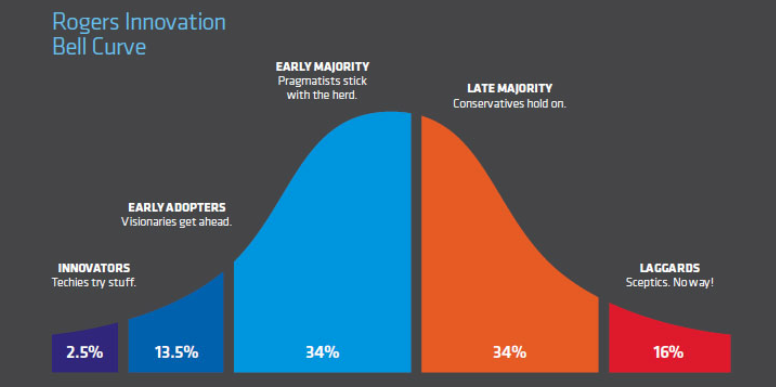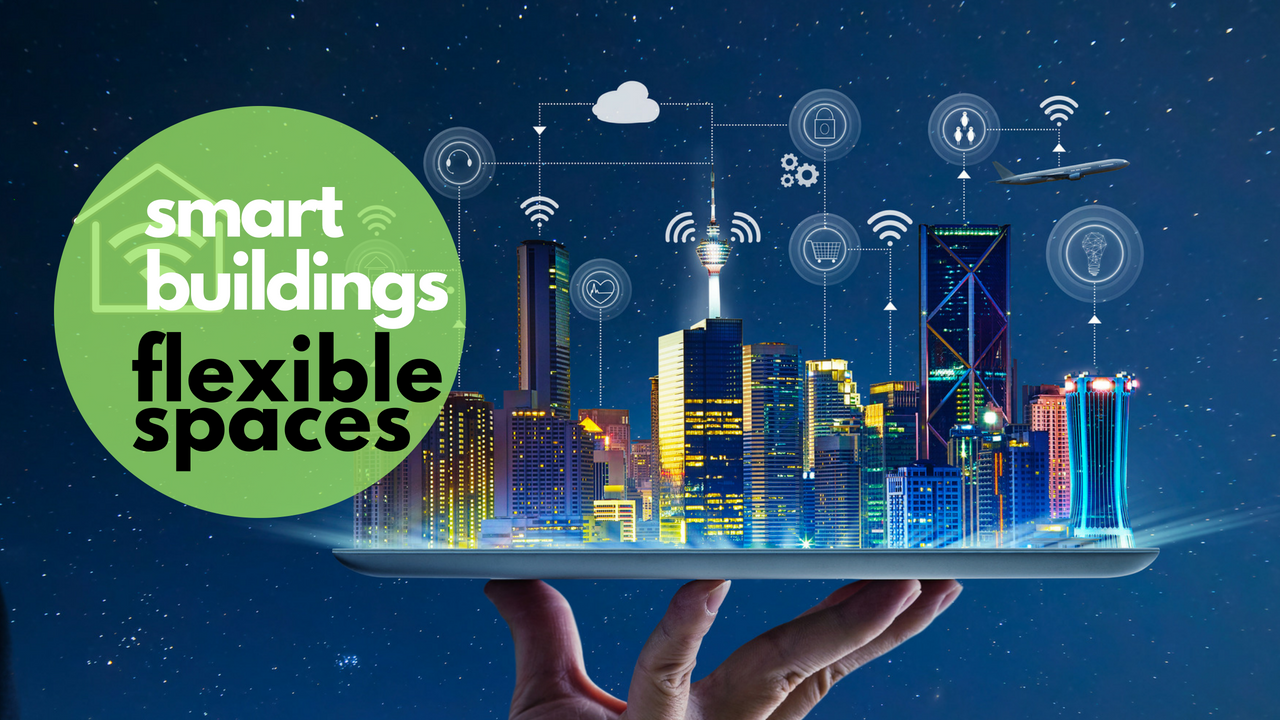- Smart buildings are more energy efficient, cost less to operate, provide a safer and healthier and happier environment for all the occupants and visitors
- The global market size for smart buildings is predicted to reach $36 billion by 2020
- “Smart” is a combination of smart infrastructure and building automation, real-time data, seamless integration, and people integration
Smart buildings are moving into the mainstream as a range of new technologies mean your workspace may soon know more about you than ever before.
Experts predict smart buildings will have collected 37.2 million petabytes of data by 2020, which represents a substantial increase from the 1.2 million petabytes of information collected in 2010. The global market size is also predicted to reach $36 billion by 2020.
Such rapid growth is driven by a range of factors, including the pace of global urbanisation, favourable government regulations, the enhanced security features and reductions in operating costs (most notably, your energy bill) such smart technologies provide.
We spoke to Reinhold Wieland, business development manager at smart building consultancy firm Connecting Buildings, to find out more about the smart buildings market and its potential impact in the flexible workspace industry.
In your opinion, how mature is the smart buildings industry? And what are the barriers to change?
Smart buildings can reduce operating costs for organisations by 30-40% with productivity increases of up to 50%.
However, based on the innovation uptake curve, I feel the industry’s maturity is somewhere below the first 10%. But every app or specific technology has its own curve.

There is a lack of definition on what a smart building is. Perhaps it would be better to grade it on a scale of 1 to 10 or with a star rating. I would say the average of buildings would be on a rating of 3, but many would rank much lower.
I would say “smart” is a combination of smart infrastructure and building automation, real time data, seamless integration, and the real “smart” comes with workflow engines when the building integrates with people in an intelligent way.
First, under Stage 1, one needs to have the infrastructure in place to enable a building to be smart, this includes: IT networks, IoT, wifi, building automation and energy management. I would rate these apps as 1-5 on the scale. At this stage, building systems would already inform stakeholders of problems and provide visual displays on the system’s status.
There is a substage in between which uses apps like space management or room bookings. These are in the smart space but are not essentially connected with other systems. A lot of new so-called smart technologies are being developed in this area.
Stage 2 would be the seamless interconnection of systems and having data available in real time. I would rate this 6-8 on the scale. Stage 3 is when the building is interacting with people automatically using intelligent workflow engines. This could be 7-10 on the scale.
What are the main challenges of the smart building industry for flexible workspaces?
Firstly, building services are not designed to be integrated. This has slowly changed for building automation, for example, by introducing common protocols like BACnet, but most other building services are still operating as silos. This is because of inherent security fears and, furthermore, contractors want to protect future maintenance revenues by using legacy systems with little transparency.
Then, there are the various layers of building management – like property and tenant management, facility management, and so on. They all have various requirements and operating systems that are not designed for integration.
As a result, obtaining information on building systems is difficult since the information is held by silos and information is usually not shared or in real time. The people working in these buildings also, generally, have little knowledge about and control over the building systems.
All of the above contribute to high operation costs, excessive energy costs and consumption, inefficiencies in all departments, poor workflows and so on.
Last, but not least, is the reluctance to change, take the risk of the unknown, fear of having to learn something new, fear of job loss and fear of transparency.
How can we resolve these challenges?
Through our consulting work, we can enable existing or new buildings to be “smart ready” and energy efficient, from the existing status through to delivery and ongoing operation.
Our Iviva software platform fundamentally changes the way smart buildings are designed, constructed, operated and/or upgraded by bringing buildings to life through the fusion of BIM (Building Information Modeling) and IoT, converting CAD files into operational BIM, delivering the digital twin of a building from engineering to procurement, implementation to ongoing commissioning to maintenance and lifecycle management.
What impact will 5G have?
5G will provide better and faster connectivity, which will lead to more connected devices, drive down costs and speed up smart cities capabilities. Better and faster connectivity might also change the workplace as there will be less need to work from an office, leading to more workplace flexibility.
Are there any old buildings that it would be impossible to retrofit with smart tech?
Smart buildings don’t have to be new buildings. Software or wifi does not care if a building is old or new. Most of the existing building stock (perhaps 90%) is suitable for smart building technology.
However, lack of existing infrastructure like IT, building automation, sub-metering and availability of drawings or asset information can all present cost barriers to landlords. However, all those could be implemented in retrospect. Asset registers can be updated, drawings can be made from 2D to 3D, sensors can be wireless, and so on.
What specific technologies are your customers/the industry demanding? And what technologies are not as popular?
It depends who we talk to because smart means lots of things to lots of people. Smart may mean the building is equipped with building automation or it is IoT enabled. This is the traditional trend.
Some say it is smart when IoT data is pushed out in the cloud with some analytics made available. There is a trend in doing this in anticipation of future innovation. Some use smart apps for space management and, therefore, the building must be smart. However, this can be very effective in the short term with good return for the operators.
What’s not popular is spending a lot on infrastructure because the smart industry has not made a good and verified business case for the potential savings to business.
In summary, when talking to property groups, the effect of operational savings could be grouped in the 3/30/300 rule. 3 for utility costs, 30 for space management and 300 for people management. This may explain why energy efficiency projects have a lot of barriers in uptake.
What do you think the future of smart buildings is for flexible workspaces?
Tenants are becoming increasingly mobile and demand smart services and smart space management from landlords. For example, tenants are demanding smart spaces with smart digital services and environmental controls, while paying only for the time they use the space and services.
This demand from tenants will have a domino effect on how landlords approach space management, unleashing a healthy competition as they try to attract the mobile tenant market. As a result, those landlords that add additional smart services to data enabled buildings can, therefore, charge premium fees for the space.
Perhaps, there will be a transparent and open smart building enabled rating for all buildings, which would then attract tenants.
Smart buildings are more energy efficient, cost less to operate, provide a safer and healthier and happier environment for all the occupants and visitors. All this will speed up the conversion of existing buildings into smart spaces and smart buildings in the flexible workspace arena.
Finally, do you believe all smart buildings will one day be integrated into smart cities?
Absolutely! The technology is already here. The level of integration could be in multitude layers and might be driven by government or commercial applications. Early applications might be utility data sharing allowing smart grid management and share of locally generated energy between buildings and communities, as well as the better utilisation of space and traffic management.


 Dr. Gleb Tsipursky – The Office Whisperer
Dr. Gleb Tsipursky – The Office Whisperer Nirit Cohen – WorkFutures
Nirit Cohen – WorkFutures Angela Howard – Culture Expert
Angela Howard – Culture Expert Drew Jones – Design & Innovation
Drew Jones – Design & Innovation Jonathan Price – CRE & Flex Expert
Jonathan Price – CRE & Flex Expert














